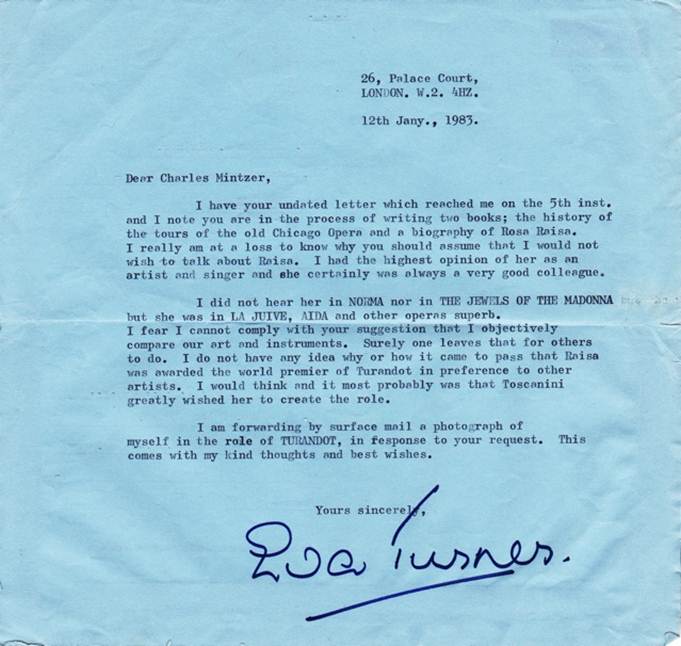By Linda Esther Gray
403 pp Green Oak Publishing 2011
ISBN 978-0-9555505-2-2
www.singbelcanto.com
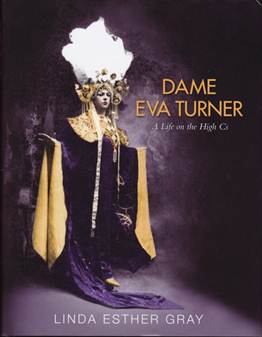
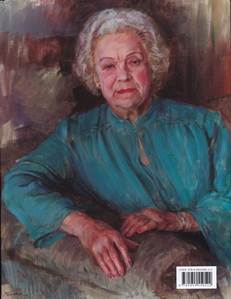
Reviewed by Charles Mintzer
EVA TURNER – A LIFE ON THE HIGH C’S
By Linda Esther Gray
403 pp Green Oak Publishing 2011
ISBN 978-0-9555505-2-2
www.singbelcanto.com


Reviewed by Charles Mintzer
After many efforts, and after we had come to believe it would never happen, we now have the Eva Turner book. The great English dramatic soprano’s story needed telling. Linda Esther Gray, one of Dame Eva’s protégées, has crafted this biography. She had access to Dame Eva’s papers, which had been willed to the Covent Garden archives, and also had seen documents saved by Turner’s relatives. This mass of information has been stitched together in an attractive 400 page book with a cd. Having written an opera singer’s biography (Rosa Raisa, 2001) I can appreciate how daunting it is to fashion the narrative to support the wealth of first-hand information at one’s disposal. Full disclosure: I helped Mme. Gray with the Chicago Opera information; she does dedicate the book to all the people who helped her though acknowledgements aren't included or footnoted. The book is lavishly illustrated with private and personal photos, most never before published. The opera photographs are mostly known images, but also there are some very rare ones. Mme. Gray was lucky to have a sponsor, Robert Hendra, who provided the funding to make this book possible; this gift is fully acknowledged on the title page and on the dust jacket, and we are the lucky ones benefiting from this generosity, for the book has a lavish quality, printed on high-quality heavy paper. The book feels important and expensive.
The book has many virtues and will be a “must have” for the legion of admirers of Dame Eva. This is not a traditional opera singer biography for it has neither a chronology nor a discography. Much of Dame Eva’s career can be gathered from a close reading of the text with its very substantial quotes from reviews of her performances. An example of how a day-by-day chronology would help clarify some issues: Dame Eva always claimed to have been present at the La Scala “Turandot” premiere on 25 April 1926 and often in later years told the well-known anecdote of how Toscanini ended the performance at the exact spot Puccini stopped composing; however in the narrative, if I read and understood it correctly, Dame Eva in that timeframe was singing Aidas and Minnies (“La Fanciulla del West”) in Lisbon and Oporto, Portugal at the Teatro Saõ Luis (the third theatre after the S. Carlos and the Coliseu). Was there a gap of three or four days in her performances in Lisbon or Oporto to allow for a quick trip to Milan, under 1926 travel conditions, for the “Turandot” premiere?
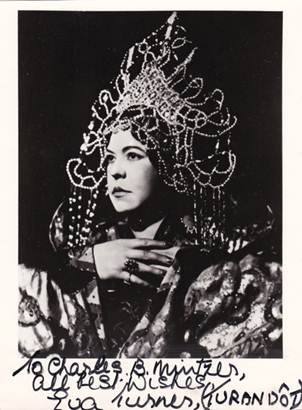
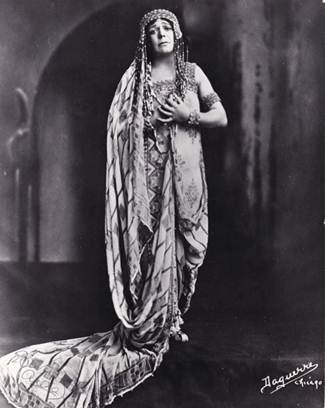 (as Turandot and Aida in Chicago, courtesy Charles Mintzer)
(as Turandot and Aida in Chicago, courtesy Charles Mintzer)
(Eva Turner on Turandot and her being present at the world premiere)
Her early years with the touring Carl Rosa opera and her tour in 1925 of thirteen German cities plus Vienna (Volksoper) would also benefit from a day-by-day treatment. These engagements are covered in a fragmentary way in the appendixes. How often did she sing, who were her colleagues; Mme. Gray found among Dame Eva’s papers quotes from newspapers in many of the cities visited on the 1925 tour of Germany, and one can form a reasonable idea of what that tour was like. In late 1925 to early 1926 it is stated that she sang 30 performances in northern Italy. I would love to know the details of those thirty performances. My friend, Robert Rideout, several years ago published on-line an overview, with many details, of Dame Eva’s career. His overall point of view is very positive about the great lady and it has a much clearer summary of her career: http://web.archive.org/web/20061202060054/http://chalosse.free.fr/masterpieces/step-one/turner.htm.
An issue that often arises when discussing British, or even American, singers is the perceived prejudice they had to overcome in their own countries; many in the public not believing that top tier singers of British, or American, nationality can be the equal of those with foreign, or more specifically, Italian-sounding names. Dame Eva had to overcome this prejudice many times, but there is a lot of “hurt” expressed; it shows in the difficulty in obtaining engagements in the world’s top theatres and often the lesser salaries offered. Of course this prejudice works the other way too; being over-praised by people in your own country because you are perceived as one of them, sort of reflected glory.
Dame Eva lived to 98 years old and when I visited her in 1985 she was a vital, active 93. From about 1960, onward, after the end of her public singing days and her nine years on the faculty of the University of Oklahoma as a teacher of singing, she was very much in the public eye, giving interviews and expounding on her career and the illustrious people and situations in which she was involved. For the very reason she was so charming and articulate the British, and to a lesser extent the American, publics elevated her to a niche a bit larger than her career, as such, might properly suggest. A friend of mine many years ago in a discussion of Eva Turner opined that all the “hype” about her was unnecessary, that all one had to do was listen to her recording of “In questa reggia” from Turandot.
Mme. Gray does not highlight or dwell at length on Eva’s relationship with her secretary-companion Ann Ridyard, but does say “It is my personal belief that the two ladies fell in love at this early point in their relationship [1944]. They were two lonely people looking for friendship and love, and found it in each other. There is nothing in Eva Turner’s papers to substantiate that statement and I have only my own observations, having known each of the for many years, linked with an instinctive gut feeling that there was something more than a professional arrangement involved in their relationship. Seeing them together, they were never less than the sum of their parts and were in many senses – one. They just felt like an old married couple by the time I knew them with all the history that might suggest.”(page 230). There are many photos of the two women together at various functions, such as after the award ceremony when she was named “Dame” of the British Empire.
I hope I have not given the impression that I don’t appreciate Eva Turner. Au contraire! I understand why her legend means so much to so many people. But I am a fact-checker of sorts, and when I detect some shading of facts I take note. Buried in the text dealing with her 1938 trip to the United States to sing “Turandot” and other operas at the Chicago City Opera there is a diary-type entry that it was arranged for her to visit the Metropolitan Opera in New York. It is true she auditioned on the Met stage: Tristan und Isolde “Liebestod” and Turandot’s “In questa reggia.” Eva is quoted to the effect that general manager Edward Johnson was “very, very, very impressed” but conductor Artur Bodanzky was “antagonistic.” This audition which was arranged by artist-manage Eric Simon, was accomplished under the name Eva Rutren,” an anagram of Turner. The audition card, now housed in the Met Archives, reads “Old, not interesting.” There is discussion in the book about the feasibility of accepting an offer in 1951 of a run of “Turandot”s at the Met. It strains credulity that a 59 year old singer would be seriously considered for so daunting and exposed a role.
The cd that comes with the book is curious; it starts with four Turner tracks, including the above-mentioned iconic recording of “In questa reggia.” I have surmised that the other internationally-famous singers included are to showcase Eva with some of the big names who sang in seasons in which she participated. I was puzzled by the inclusion of Elizabeth Schumann in the “Meistersinger” quintet with Schorr and Melchior; I finally figured out that it was included for the Magdalene of mezzo-soprano Gladys Parr, a great friend of Eva’s and mentioned frequently in the book. Lauri-Volpi’s inclusion on the CD has a level or irony. In the magazine “The Record Collector” a British enthusiast wrote an indignant letter that when Lauri-Volpi was asked for his estimate of Dame Eva, he claimed not to even remember who she was. This seemed incredulous to the letter-writer. Now he is on her CD!
(Turner and Gladys Parr)
There is much in the book about singing technique, understandably so, as Linda Esther Gray is herself a successful singer with a career of note. Dame Eva had a hand at various times in the careers of Amy Shuard, Gwyneth Jones, Rita Hunter, Pauline Tinsley to name just a few. She was beloved in the UK, deservedly so. This book was needed. People often ask why is there no book in English on Claudia Muzio (a Turner favorite by the way) or Elizabeth Rethberg? With book publishing in serious decline, especially books that appeal to a limited readership, this book comes as a boon. We now have the Eva Turner book! Recommended.
Read a letter from Eva Turner to our reviewer
